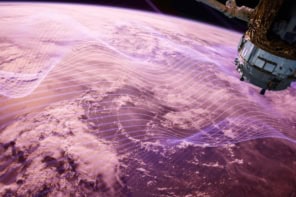Scientists have shown that human activity is having an impact on the height of the tropopause - the boundary between the troposphere (the lowest layer of the atmosphere) and the stratosphere. The height of the tropopause increased by about 200 metres between 1979 and 1999, and Benjamin Santer of the Lawrence Livermore National Laboratory in the US and colleagues in Germany, the UK and the US have used computer models to show that about 80% of this increase was directly caused by human activity (B Santer et al. 2003 Science 301 479).
The height of the tropopause varies from about 15 kilometres above the Earth at the equator and to about 8 kilometres above the poles. It marks the limit of most clouds and storms, and plays an important role in the development of large weather systems. Its height is sensitive to changes in atmospheric temperature caused by pollution and global warming.
Santer and colleagues modelled climate changes caused both by man-made factors such as greenhouse gases, atmospheric ozone and sulphate aerosols, and by natural phenomena such as changes in solar activity and volcanic eruptions. “We examine the output from the models and compare this with observations,” Santer told PhysicsWeb. “In the model world we can change one factor at a time, while holding the others constant. This allows us to isolate and quantify the effect of individual factors.”
Santer and colleagues say that increased amounts of greenhouse gases warm the troposphere, while reduced levels of ozone cool the stratosphere. Both these effects increase the height of the tropopause. The results provide independent support for troposphere warming and overturn controversial claims based on satellite measurements that showed little or no tropospheric warming over the last 20 years.
The team found that its results agreed well with other ‘fingerprint’ studies. These include increases in Earth and sea -surface temperatures, sea-level pressure patterns and the melting of the polar ice caps.



